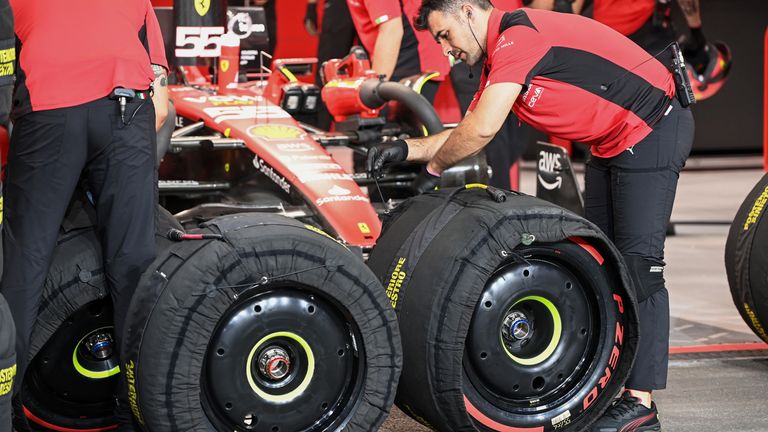The requirement that all tyre compounds be used in qualifying was implemented twice during the current Formula 1 season. It appears that the test was successful because Formula 1 is in favor of having the setup return to every Grand Prix in 2024.
Formula 1 constantly considers how to make the sport safer while simultaneously advancing the cause of sustainability and making the sport more engaging.
The notion of permitting drivers to utilize all three tyre compounds during qualifying was put forth with the latter two considerations in mind. The arrangement was tested this season during the Hungarian and Grand Prix of Italy: Q1 is Hard, Q2 is Medium, and Q3 is Soft. It appears that the experiment was successful. The sport thus desires to establish it as a permanent regulation.
The qualifying rule appears to have excited some members of the paddock, primarily because it adds an extra dimension to qualifying and promotes the long-term viability of the sport. At the forthcoming F1 Commission meeting, which is scheduled for the Abu Dhabi Grand Prix, a final decision will be made.
Each car on a team is typically supplied with 13 sets of dry-weather tires during a Grand Prix weekend. This would drop to 11 sets under the new qualifying format. With 24 races in a season, that will easily save 3840 tires or 40 sets of tires over the course of a weekend. A cost-cutting move that’s also encouraging for sustainability because it allows Pirelli to ship fewer tires across the globe.
The number of tires that will be used in the intended new system in comparison to the current configuration is shown in the following table. The rest of the article is below.
Drivers will have seven sets left in the current configuration for both qualifying and the race. Assuming a “normal race weekend” is underway rather than a Sprint weekend, these numbers will only alter in the new configuration. After three free practice sessions, drivers will have six sets remaining (because they will begin the weekend with 11 sets in the new setup), which is just enough to run qualifying and races on two sets of Hards, two sets of Mediums, and two sets of Softs.
This preserves tires while maintaining a clear picture of qualifying conditions. The system appears to be well-organized, even to the fan who does not watch every practice or race. It is true, though, that qualifying in this format loses some of its allure because the session ought to revolve around maximum speed. A driver always wants to finish their quick lap on the quickest tire. Because only drivers who finish in the Q3 section are permitted to use the softest tires, that will not function under the proposed changes.
However, there will be an extra component that allows drivers and teams to fine-tune the vehicle for the various compounds that are required to be used. For some teams, this can work to their advantage or disadvantage depending on how well they perform on Hards in comparison to other teams. For instance, we witnessed in Hungary how George Russell struggled mightily on the Hards when he was forced to run on them in the first round and ultimately lost.
Durability
It is imperative that a sustainable step be taken for both Pirelli and Formula 1. With the new configuration, forty sets of tires would be saved every weekend, resulting in an annual savings of 3840 tires or 960 sets that Pirelli would not need to ship around the globe. A significant cost savings that perfectly complements Formula 1’s plan to make the sport more sustainable.
But the drivers aren’t quite as excited about the potential configuration for 2024 as they once were. A number of drivers expressed their disapproval of the regulations that were being tested during the race weekends in Hungary and Monza. Similarly, three-time world champion Max Verstappen expressed his disapproval of the proposals during the Hungarian Grand Prix, calling them “Totally rubbish.”
That’s my opinion of it. Invalued. There’s just not enough tire usage allowed in free practice. It’s not really necessary to practice for an hour either. You can’t do anything at all because on Friday I also told my engineer, “Let’s just wait 15 minutes, because I only have one set of tires anyway.”
“As a result, people see a lot less. As a driver, you just want to keep the tyres for qualifying and the race, because that’s the most important thing.”
“If you use everything in free practice, then of course you don’t have any tyres left in the race. So everyone tries to be as economical as possible on the tyres and those practice sessions are obviously for using at least two sets of tyres. Sometimes they like to make it difficult. And this set-up I think is really ridiculous, but yes, we have to put up with it and they figure it out.”
Whether the new rules will be implemented for the upcoming season is still up in the air. This will become clearer during or following the Abu Dhabi Grand Prix.
